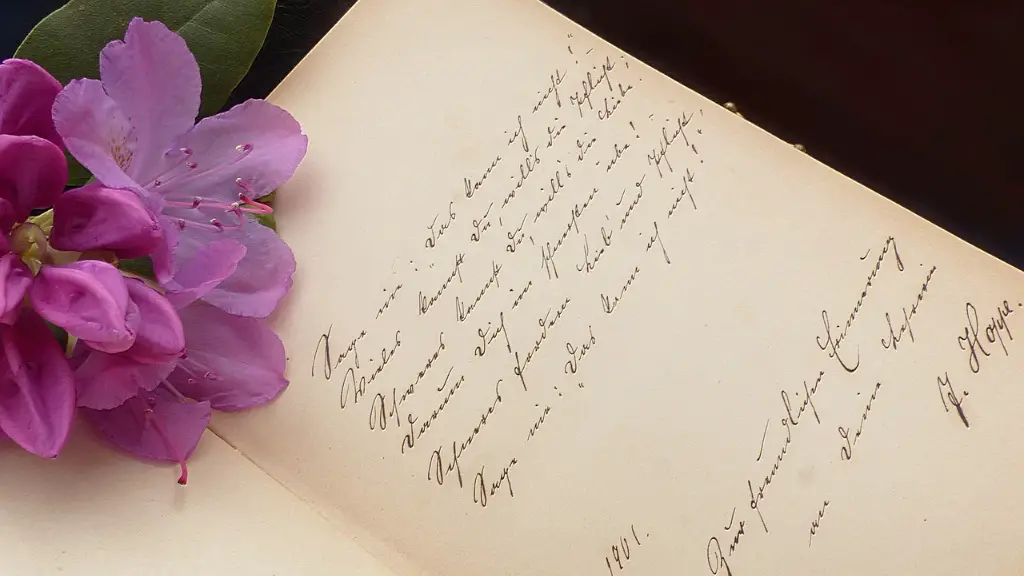Sending Poetry for Publication
Publishing poetry is an important part of being a poet. While some poets may only wish to self-publish, many writers want to get their work out there into the world, and that’s where submitting poetry to magazines or journals comes in. Successfully publishing your poetry is a two-step process: first, make sure your poem is ready to be sent, and second, find the right places to send it. With the right preparation and knowledge, successfully publishing your work is completely achievable.
Get Your Poem Ready
Once you have written a poem that you feel is ready to be sent out, it is important to do one final check-up to make sure it is in tip-top condition. Professional writers and poets suggest first taking some time away from the poem to let a fresh perspective take over. Even just letting it sit for a day or two is helpful.
Another step to consider is seeking feedback from friends or poetry groups. Oftentimes, it is beneficial to get another opinion and to bounce ideas off of other people, especially those with similar literary taste. Sometimes, a simple swap of words here and there, or even a rearrangement of a line can make a big difference in your poem.
The final step to readying your poem is to ensure it is ready to submit. Check and double check the poem for typos and any parenthetical words or thoughts which do not aid to the poem’s impact. Additionally, make sure that poem follows proper poetic form, like iambic pentameter, if applicable.
Where to Send Poetry
Once your poem has been tested and polished, it is time to think about where to send it. Depending on your goals as a writer, you may want to send your poem out to different types of publications, such as a friendly site for amateurs, or a well-respected, scholarly journal in the field.
When looking for a good place to send your poetry, there are many resources available, like Books & Writers and Duotrope. These websites make it easy to research a magazine’s reputation in relation to getting one’s work published, and often supply basic guidelines for submitting that particular magazine.
Another avenue to explore is finding reputable magazines in the style in which you write. If you are unfamiliar with particular magazines in your genre, look up those already published in respected literary magazines. Research the style of work the magazine typically prints, and try to align the poem with what they are looking for. It is still possible to get a poem accepted by a magazine when the poem is not exactly in the style of what they generally publish, but it is not as likely.
Remember, the goal when sending out your poetry is to make sure the magazine is a good fit for the poem. If a magazine primarily prints poems of a certain style and topic, then a poem on an entirely different subject may be an ill-fit. It is important to send one’s work to a magazine that is conducive to one’s interests and that truly believes in the poem.
Submitting Guidelines
After finding the right magazine or journal to send your poem to, it is important to be aware of their submission guidelines. Guidelines ask potential submitters to follow specific formatting information, such as line lengths and font size. If the poem is not formatted according to their specification, the magazine or journal may not consider it. Additionally, some magazines may request a certain length or style, so make sure to stay within the confines of their guidelines.
Another part of the submission guidelines involves a cover letter. This letter should be concise and professional. If a magazine requests a cover letter, it is important to include it. Include your name, address, phone number, and any credits to your name. Additionally, mention the title of the poem and why it is relevant to the magazine’s style.
Finally, magazines often have different payment methods, which are outlined in the submission guidelines. Some offer payment in the form of publication copies or a piece of the royalties and some do not pay for publication. It is important to read the rules carefully and decide if the potential payment is worth submitting. At the same time, some magazines do not ask for submission or reading fees, while others will want you to pay.
Good Practices
As a polite gesture and to avoid unnecessary clutter, it is important to withdraw any poem that has already been accepted elsewhere. Additionally, it is best to wait for a reply before sending out the poem again. Different publications tend to take varying amounts of time, so it is important to check the guidelines to determine when is best to send a follow-up query.
In addition, when a poem is not accepted, it can be beneficial to use the feedback, as many magazines and journals will offer constructive criticism. Though it can be difficult to receive such comments, it is important to remember that it is ultimately up to you whether or not you follow their advice. Every poet has their own processes, and what works for some may not work for others.
When an editor does accept a poem, the poet can always take time to thank them for their time and for the opportunity. Many magazines take sincere pleasure in sharing a writer’s work and will appreciate the gesture. At the end of the day, the job of any poet is to find the right place that accepts one’s work and to celebrate the success and progress one makes as a writer.
Keeping Track of Submissions
As poets can send multiple poems to multiple places, it is important to keep track of where each poem has been sent. One way to keep track of submissions is to create a spreadsheet which organizes the poem title, place, date sent, follow-ups, and responses. If a poem is sent more than once, make sure that the subsequent time the poem is sent, all of the submissions guidelines have been met.
Create a timeline for responses, and respond in kind. If a response shows up and it is been more than two weeks since it was sent, feel free to email the magazine again. It can take some time for a response to make its way back, but if it has been a month since the poem was sent and no answer has come, it is likely the poem has been declined.
No matter if the submission is accepted or declined, responding to the editors in a courteous and prompt manner will create a strong reputation in the literary magazine world. Editors receive hundreds of submissions a day, so being an order and respectful writer is essential.
Submitting Work on Social Media
For those with social media presences, submitting one’s work to those platforms may help to generate a following. Those with a large Twitter following or who are active in the literary Instagram community can share their works directly to their walls and get direct feedback from fans and other poets. However, since the works that are featured on these social media platforms can be seen by millions of people, it is important to make sure that each piece is ready to share.
It can be easy to post a hastily-crafted poem onto a page, but it is important that one puts the same level of care and attention into the poem as they would if they were submitting it to a magazine. Writing with care shows that the poet is serious about their work, and will often lead to higher engagement and more compliments on one’s work.
In addition, poets can post longer works, such as books and collections, to social media platforms to garner attention from those outside the literary world. Blogs, interviews, book tours, and other methods are a great way to get the word out about a book.
Simultaneous Submissions
Simultaneous submissions are a method for getting one’s work out to multiple places at one time. This is beneficial for those who have many pieces that they are trying to quickly get started. This strategy is often employed to gain wider exposure, which can lead to having multiple pieces accepted at the same time.
When submitting the same piece to multiple places, make sure to add a line that explains the poem is being sent to multiple places. This helps the editorial team to not expend unnecessary energy. Additionally, if your piece is accepted, make sure to withdraw the piece from any other places it has been sent.
If sending out many pieces at once is not right for you, take time to research, hone, and craft each piece so it can stand out against the crowd. Craft your poem in the style of the magazine and carefully combine good writing practices and strategy.
Online Publishing
Many poets may not have access to traditional print journals but may still want to get their work seen, and that is where the beauty of the digital world comes in. There are many online magazines and journals that accept submissions from all different types of poets, so it can be beneficial to find places like that.
Those who are unfamiliar with online outlets can still stay connected to the publishing process by joining a number of writing communities on social media platforms. Writers can join to mingle with other poets, critique each other’s work, and share their stories.
Utilizing one’s network or participating in writing activities such as NaNoWriMo or poetry slams can help to build a strong presence online, as well as to get encouragement from readers to keep creating and submitting one’s work.
Exploring New Avenues
Beyond the traditional methods of submitting poetry, many poets are looking for new and creative ways to get their work out there. Self-publishing through websites like Amazon, Barnes & Noble, and Lulu is one avenue to explore.
When it comes to self-publishing, there are many important steps to consider, like designing a book cover, formatting the text, and promoting the book. Setting up print-on-demand services such as CreateSpace or Lulu can help to make the book come alive, while setting up customizable websites and blogs can help in marketing the book.
Finally, setting up online stores like Shopify, Etsy, and Kite will enable poets to sell their books directly to readers, eliminating the middle man and creating more money for the writer.
Reaching Out to Editors
Another way to potentially get one’s poem published is to send an email directly to the editor of a magazine or journal. Though it takes more time to compose emails than to just tick boxes on a form, sending an email allows the poet to express why their work is perfect for the magazine and may give them an advantage over those submitting from a form.
When reaching out to editors, poets should keep their emails brief, yet persuasive. Introduce both the poet and the poem in the email and make sure to outline why the poem is a great fit for the magazine. Additionally, including links to any achievements the poet has made can create extra credibility.
Most importantly, poets should make sure to follow up emails, even if the magazine has previously stated that they do not reply to emails. If no response is given, then the poet can choose to send the poem elsewhere, but it is always important to keep polite and professional.





